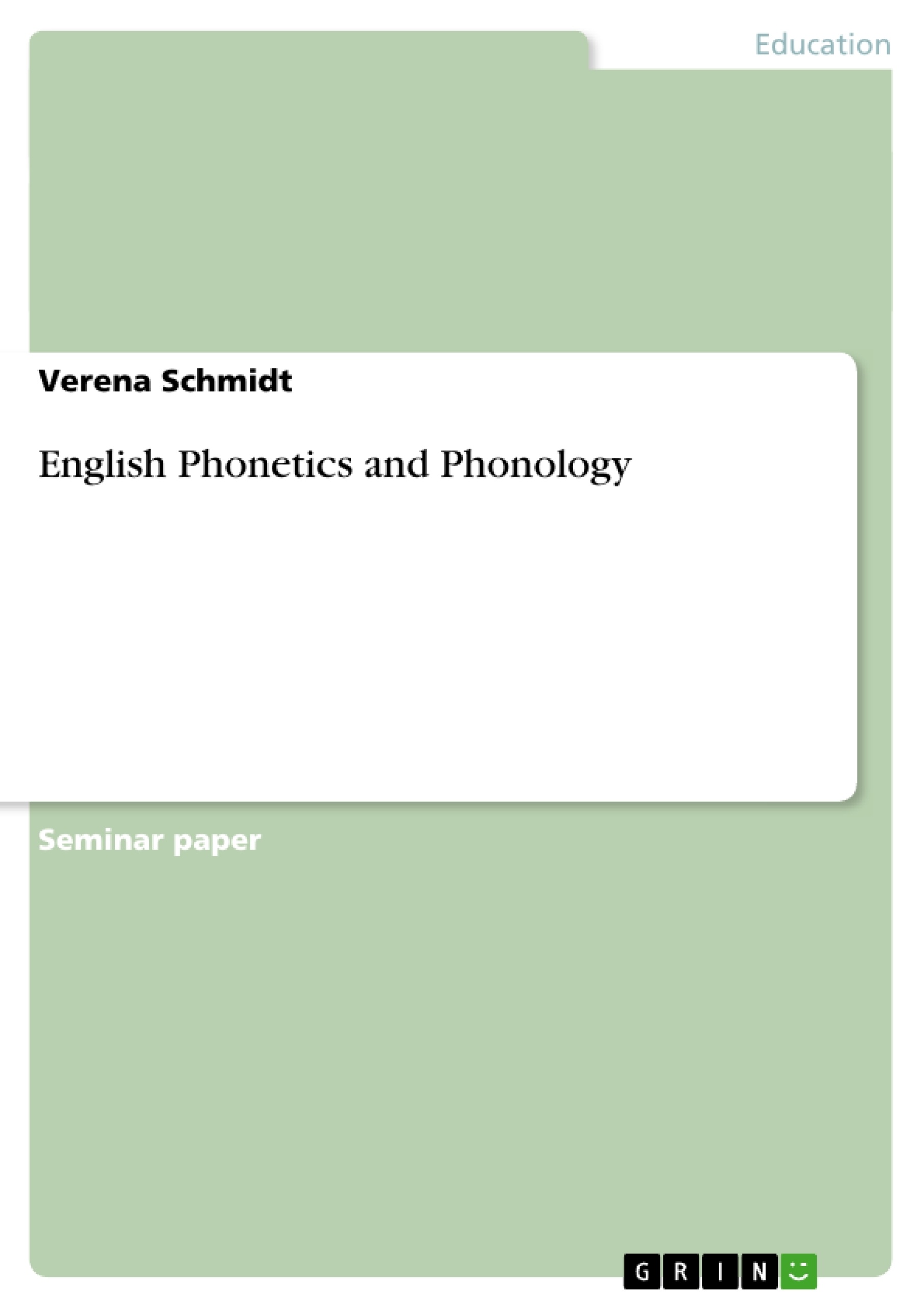This seminar paper will be about the phonemic transcription of an excerpt from an online article from the Huffington Post. The subject is Willem-Alexander’s first visit to Germany after his investiture as King of the Kingdom of the Netherlands. The phonemic or broad transcription will be based on the Cambridge English Pronouncing Dictionary by Daniel Jones (2011).
After the transcription, some differences between Received Pronunciation (RP) and General American (GA) will be shown on the basis of some examples from the text.
The second part of this seminar paper will broach the issue of different phonological phenomena given in the text. This theoretical part of the written seminar paper will deal, first of all, with the allophones clear [l] and dark [ɫ], then the so called “happY-Tensing” will be presented, afterwards this paper will deal with the syllabic consonants and at last a distinction of so-called strong and weak forms will be given.
Inhaltsverzeichnis (Table of Contents)
- Introduction
- Phonemic transcription with phonological and phonetic annotations
- Practical part: Transcription
- Broad transcription in RP of text #6
- Differences in pronunciation between RP and GA
- Theoretical part: Annotations
- Clear [l] and Dark [ł]
- HappY- tensing: happy- i and happy-u
- Syllabic consonants
- Strong forms and weak forms
- Practical part: Transcription
Zielsetzung und Themenschwerpunkte (Objectives and Key Themes)
This seminar paper analyzes the phonemic transcription of a text excerpt, focusing on differences between Received Pronunciation (RP) and General American (GA). The paper aims to illustrate key phonological phenomena through phonetic annotation. * Phonemic Transcription in RP * Comparison of RP and GA pronunciation * Allophonic variations of /l/ (clear and dark) * Happy-tensing * Syllabic consonants and strong/weak formsZusammenfassung der Kapitel (Chapter Summaries)
Introduction: This introductory section sets the stage for the analysis by explaining that the paper will focus on a phonemic transcription of an excerpt from an online article about Willem-Alexander's first visit to Germany after his coronation. It outlines the methodology, which is based on the Cambridge English Pronouncing Dictionary, and previews the two main parts: a practical transcription section and a theoretical annotation section. The paper promises to highlight differences between RP and GA pronunciation and to delve into several key phonological phenomena.
Phonemic transcription with phonological and phonetic annotations: This chapter forms the core of the paper. The practical section presents a broad transcription in RP of the chosen text excerpt, meticulously rendering the pronunciation according to the specified dictionary. The following subsection contrasts RP and GA, specifically focusing on the rhotic nature of GA and its impact on vowel articulation. The theoretical section tackles several significant phonological aspects: the allophonic variation of /l/ (clear and dark), the phenomenon of "happy-tensing," syllabic consonants, and the distinction between strong and weak forms. Each aspect is explained with supporting examples from the transcribed text.
Schlüsselwörter (Keywords)
Received Pronunciation (RP), General American (GA), phonemic transcription, phonology, phonetics, allophones, clear [l], dark [ł], happy-tensing, syllabic consonants, strong forms, weak forms, English pronunciation.
FAQ: Comprehensive Language Preview
What is the topic of this language preview?
This preview covers a seminar paper analyzing phonemic transcription, focusing on the differences between Received Pronunciation (RP) and General American (GA) English. It includes a detailed table of contents, objectives, key themes, chapter summaries, and keywords.
What are the key themes explored in the paper?
The paper explores several key phonological phenomena, including: phonemic transcription in RP, a comparison of RP and GA pronunciation, allophonic variations of /l/ (clear and dark), happy-tensing, syllabic consonants, and strong/weak forms.
What does the "practical part" of the paper involve?
The practical part focuses on the phonemic transcription of a text excerpt in Received Pronunciation (RP). It also includes a comparison of RP and GA pronunciation, highlighting differences, particularly concerning the rhotic nature of GA and its effect on vowel articulation.
What does the "theoretical part" of the paper cover?
The theoretical part delves into the phonological aspects illustrated in the transcription. Specific topics include: the allophonic variation of /l/ (clear and dark), happy-tensing, syllabic consonants, and the distinction between strong and weak forms, each explained with examples from the transcribed text.
What specific text is transcribed?
The text excerpt transcribed is from an online article about Willem-Alexander's first visit to Germany after his coronation.
What resources are used in the transcription?
The transcription methodology is based on the Cambridge English Pronouncing Dictionary.
What are the objectives of the paper?
The paper aims to illustrate key phonological phenomena through phonetic annotation of a phonemic transcription, specifically highlighting differences between RP and GA pronunciation.
What are the keywords associated with the paper?
Keywords include: Received Pronunciation (RP), General American (GA), phonemic transcription, phonology, phonetics, allophones, clear [l], dark [ł], happy-tensing, syllabic consonants, strong forms, weak forms, and English pronunciation.
What is the structure of the paper?
The paper is structured into an introduction, a main chapter on phonemic transcription with phonological and phonetic annotations (divided into practical and theoretical parts), and a conclusion (implied).
- Citar trabajo
- Verena Schmidt (Autor), 2013, English Phonetics and Phonology, Múnich, GRIN Verlag, https://www.grin.com/document/280988




